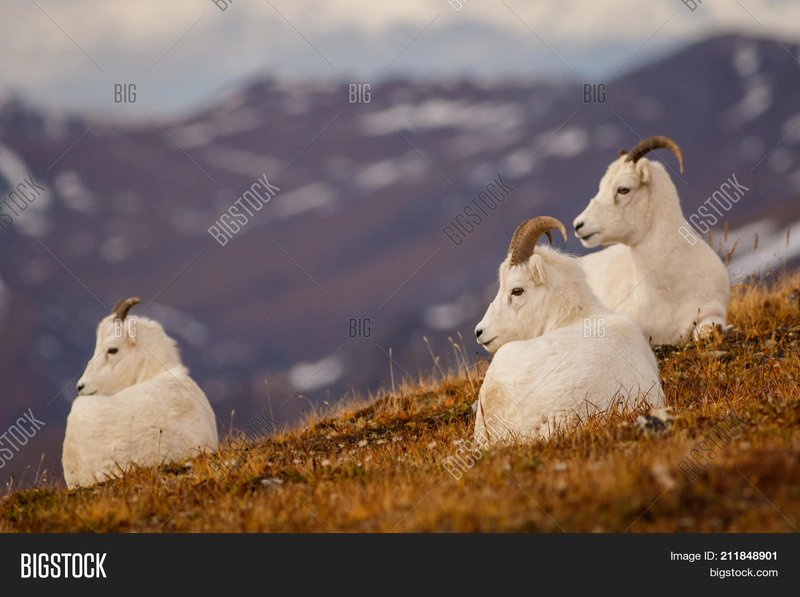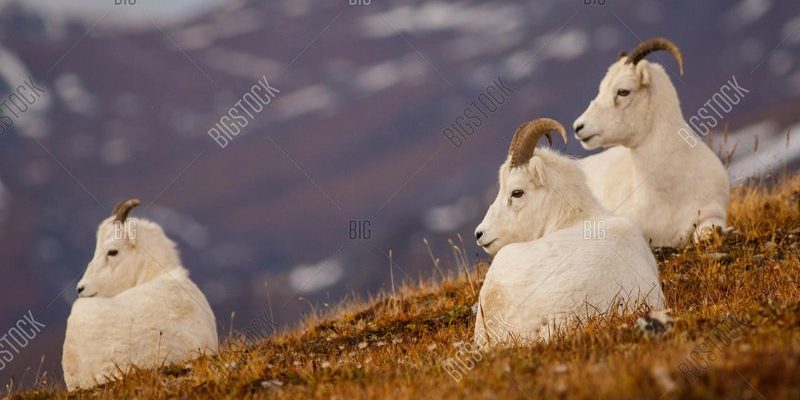
Picture a snowy wilderness, where temperatures drop below freezing and food is scarce. Yet, amid the rugged mountains, these sheep roam freely, navigating steep cliffs and rocky paths. So, how do Dall sheep manage to survive and flourish in such an unforgiving habitat? Let’s dive into their fascinating world to uncover the secrets behind their resilience.
Physical Adaptations that Aid Survival
Dall sheep are often celebrated for their impressive physical traits, which are perfectly suited for the extreme environments they inhabit. Their bodies are built for agility and endurance, allowing them to traverse steep, rocky slopes with ease. One of the most striking features is their thick woolly coats. This wool acts as an insulator, keeping them warm during harsh winters.
In addition to their coats, Dall sheep have specially adapted hooves. With a hard outer layer and a softer inner core, their hooves provide excellent grip, enabling them to navigate slippery, rocky terrain without slipping. Imagine wearing the best hiking boots on a challenging trail—that’s what these sheep have naturally!
Moreover, their unique body shape plays a crucial role in survival. With a stocky build and short legs, they can maintain stability and balance, especially when moving quickly away from predators. It’s this combination of features that allows them to escape danger while effortlessly traversing their mountainous homes.
Foraging Techniques in a Scarce Landscape
Finding food in a harsh environment can be a daunting task, but Dall sheep have honed some impressive foraging skills. They primarily graze on grasses, sedges, and shrubs, which may not seem plentiful during the freezing months. However, these sheep know how to utilize their surroundings.
In winter, when snow covers plants, Dall sheep dig through the snow using their powerful legs to access hidden vegetation. It’s their way of scavenging for sustenance, making them resourceful foragers. On sunny days, they might even be seen basking on rocky ledges, soaking up the warmth and using this energy to help them find food.
Another fascinating aspect is their ability to find mineral licks, which are essential for their nutrition. These natural salt deposits provide essential minerals, ensuring their diets remain balanced. They often travel great distances to reach these licks, demonstrating their determination and survival instincts.
The Importance of Social Structure
Just like many animals, Dall sheep thrive in social settings. Living in groups called herds, these sheep benefit from a social structure that promotes safety and well-being. By staying together, they can spot predators more effectively—there’s strength in numbers! This collective vigilance plays a huge role in survival, especially against threats like wolves or bears.
Herd dynamics also help young lambs learn important survival skills. As they grow, they observe older sheep, picking up foraging techniques and learning how to navigate their environment. Think of it like a family passing down wisdom from one generation to the next.
Interestingly, the herd’s social hierarchy can influence foraging opportunities, as well. Dominant rams often get first dibs on food sources, pushing younger sheep to adapt and be more resourceful in finding sustenance. This natural balance keeps the herd strong and versatile, ready to face challenges together.
Seasonal Migrations: An Essential Survival Strategy
Seasonal migrations are a vital part of how Dall sheep survive. As temperatures change and food availability shifts, these sheep instinctively move to different elevations and terrains. In the summer, they might migrate to higher altitudes with more lush vegetation, while in winter, they descend to lower elevations where food is easier to find beneath the snow.
During these migrations, the sheep rely on their keen sense of direction and memory. They often return to the same areas year after year, following the trails that have served them well. This phenomenal ability to navigate their rugged landscape is crucial for their survival.
The migration process is not without challenges. As they travel, they face potential dangers, such as steep cliffs and hungry predators. But the benefits of moving to more favorable environments far outweigh the risks, making migration a key survival tactic for Dall sheep.
Adaptations to Extreme Weather
Extreme weather conditions are a part of life for Dall sheep. They must be prepared for everything from freezing temperatures and heavy snow to scorching sun. One of their main adaptations is their thermoregulation ability, allowing them to maintain body heat. During extreme cold, their thick coats provide insulation, while in the summer, they shed their wool to prevent overheating.
Additionally, Dall sheep exhibit behaviors that help them remain comfortable in changing climates. For instance, in summer, they seek shade during the hottest parts of the day, while in winter, they use windbreaks—like cliffs or tree lines—to shield themselves from biting winds. These strategic choices help them conserve energy and remain safe.
Moreover, their unique feeding habits change with the seasons, ensuring they have enough energy reserves for tough weather. During warmer months, they focus on consuming more vegetation to store fat, which acts as a buffer against the cold. This dynamic adaptability is key to their survival.
Predator Evasion Skills
Predators are an ever-present threat in the wild, and Dall sheep have developed an array of strategies to avoid becoming a meal. Their first line of defense is their high habitat. By living in rugged, mountainous areas, they can often escape to steep cliffs where predators have difficulty following.
Additionally, Dall sheep possess heightened senses. Their excellent eyesight allows them to spot danger from great distances. And if a predator approaches, they exhibit remarkable agility and speed, quickly darting away and navigating the rocky terrain with impressive skill.
Another survival tactic lies in their alertness. Dall sheep are always on the lookout, thanks to their social structure that promotes vigilance. If one sheep spots a threat, it warns the rest, enabling the entire herd to react quickly. This collective awareness strengthens their chances of evading danger.
Conservation and Challenges Ahead
While Dall sheep are marvels of adaptation, they face significant challenges due to climate change, habitat loss, and hunting pressures. Their habitats are changing, and access to food and safe migration routes is becoming more difficult. As temperatures rise, the delicate balance that allows them to thrive is threatened.
Conservation efforts are crucial to ensure the survival of Dall sheep. Organizations work to protect their habitats, promote sustainable hunting practices, and raise awareness about the importance of these incredible animals. By educating the public about their needs and the challenges they face, we can help ensure that future generations get to marvel at the resilience of Dall sheep.
In conclusion, Dall sheep are a testament to nature’s ingenuity. From their physical adaptations to their social dynamics, these creatures have crafted an impressive set of tools for survival in harsh environments. As we learn more about them, it’s essential to recognize the importance of conservation efforts to protect these remarkable animals and their habitats for years to come.

